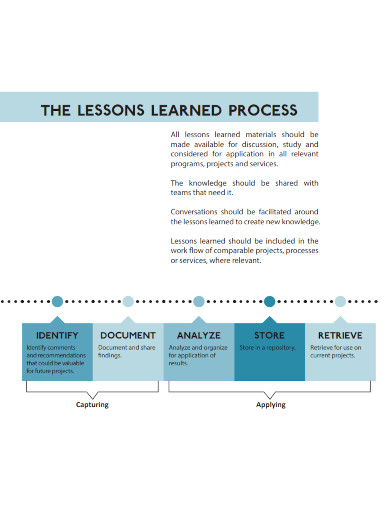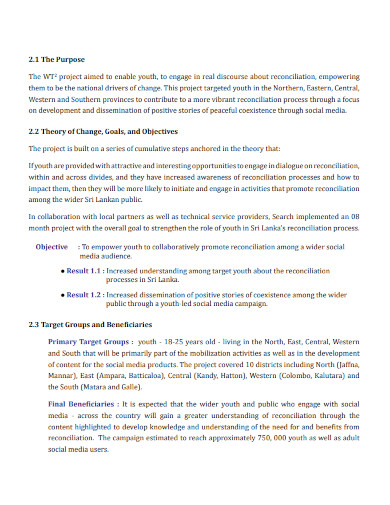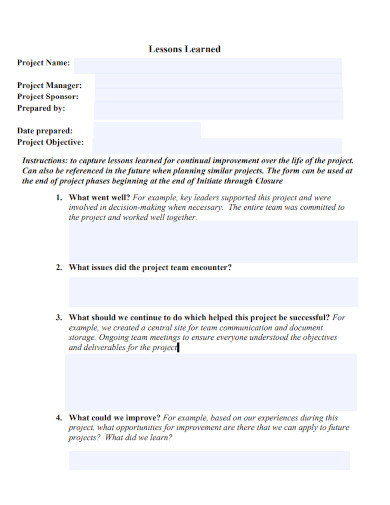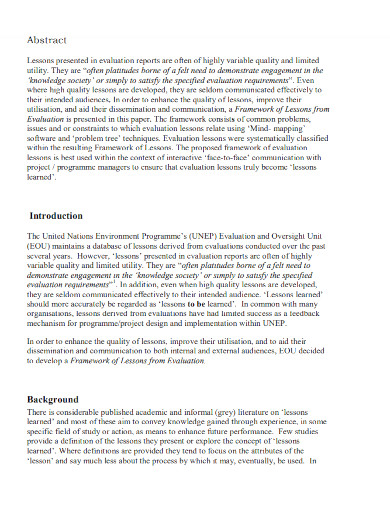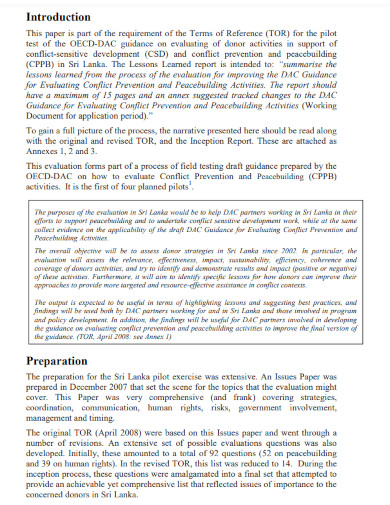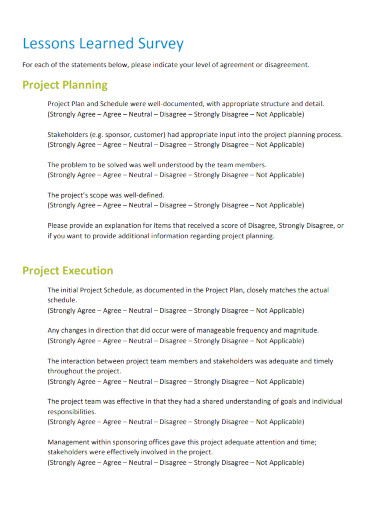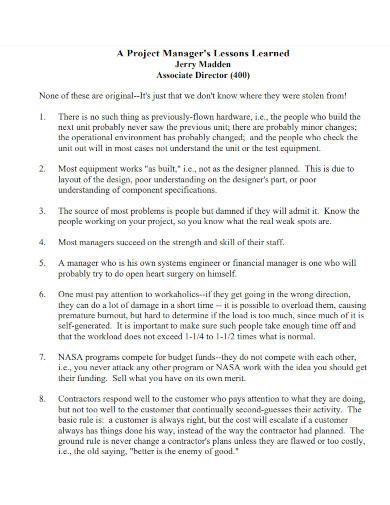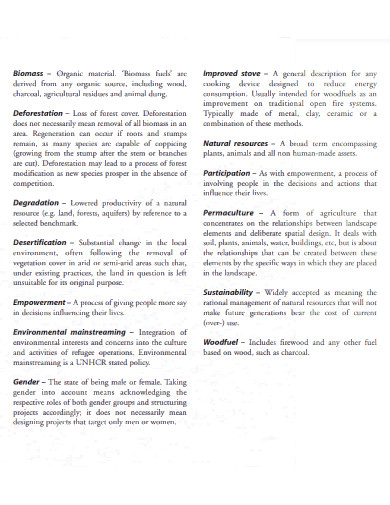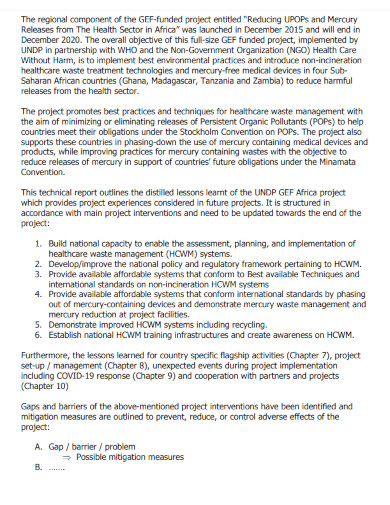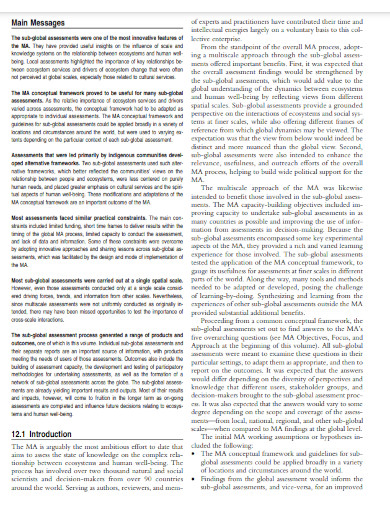The extent to which a group can grow as a result of its failures is one indicator of its level of success. Every project scope has several obstacles along the way, but these setbacks are opportunities to learn and improve for the subsequent iteration. A lot of different teams utilize a “lessons learned” template. Most project managers know the significance of incorporating previous experiences into ongoing and upcoming endeavors. Keeping note of what was learned and constantly updating it can help the project implementation stay on track. In the long term, it can also assist accountancy firms in consistently improving how they carry out initiatives, which can be a benefit.
10+ Lessons Learned Samples
1. Methodology for Lessons Learned Documentation
2. Lessons Learned Report
3. Lessons Learned Template Example
4. Lessons Learned from Evaluation
5. Lessons Learned Paper
6. Outline of Lessons Learned Report
7. Develop Lessons Learned
8. Lessons Learned Survey
9. Project Manager’s Lessons Learned
9. Level 2 Lessons Learned
10. Technical Lessons Learnt Report
11. Reflections and Lessons Learned
What Is Lesson Learned?
Lessons Learned (LL) refers to the knowledge or understanding one acquires from experiences. These experiences can be positive, such as when a test or business mission is completed successfully, or negative, such as when an accident report or failure occurs, or when incidents from the past occur in current practices. A lesson must be significant in the sense that it has a real or assumed impact on operations; valid in the sense that it is factually and technically correct, and applicable in the sense that it identifies a particular design, process, or decision that either reduces or eliminates the potential for failures and mishaps or reinforces a positive result. Lessons Learned that have been tested and proven before being incorporated into the company’s plan and practice.
How to Make a Lesson Learned Document
Using a template to document lessons learned can be helpful if certain areas of your projects consistently require more effort than others. These templates frequently include a section for the difficulties the project team encountered while working on the project. It is far more difficult to find a solution to a problem if you do not even understand what the issue is! When feedback is collected from team members, it is much simpler to identify recurring themes and zero in on specific links in the chain that are the root of the problems.
1. Review Previous Docs
It is advantageous to draw on the various project documents that have already been generated for assistance when writing excellent lessons and learned reports. These reports offer a documented piece of all the highs and lows experienced throughout the endeavor. It could be a report on the computation of costs, a report on resources, a report on the project’s progress, or an analytical report. Because these reports contain all the important information about the project, there must be significant discoveries and solutions to the potential hazards you can offer in the report on lessons learned.
2. Conduct Goals and the Objectives
Wait a moment each time you come across something that you believe would be valuable to include in a report on lessons learned. Before moving further with that step, it is important to examine the project’s aims and objectives, as well as the lessons learned report, to ensure that they are compatible with the general structure of the project.
3. Report Audience and Purpose
Locating your target demographic is the next step to take. At times, it is not entirely clear to me who exactly it is that you intend to address with the lessons learned report. Occasionally, a report on lessons learned is intended for the team, while on other occasions, it is directed to the stakeholders. In most cases, it is solely for the project manager himself to use.
4. Know What’s Going On
Maintaining an awareness of the many positive outcomes and beneficial benefits of the project is a healthy step that should be taken. It is beneficial to the overall morale of the team and helps to maintain their motivation. When you are conscious of the aspects of the project that are proceeding according to plan, you can maintain an open mind regarding any potential threats or uncertainties that may arise.
FAQs
How do I get started with a session on lessons learned?
When you are in charge of arranging a meeting to discuss lessons learned, you should hold a round table discussion and collect input in an open setting.
What exactly is a template for the lessons learned?
A paper or presentation known as a “lessons learned template” is a tool that assists team members in analyzing both the positive and negative aspects of a finished project to determine any important takeaways.
How should one go about writing a section on the lessons learned?
The report should be partitioned into sections such as the introduction, findings, conclusion, and executive summary.
You and the rest of your team are committed to your respective tasks and responsibilities if you write a good and encouraging report on lessons learned. As a result, the processes that were discussed above are useful options for you to consider while writing a report on lessons learned. These procedures will guarantee that you generate a report on the lessons learned not only as the required component of the project but also as a part of the project that will be of great use to you and your team in the future.
Related Posts
Sample Material Lists
Sample Excuse Letter for School
Feature Writing Samples
FREE 14+ Sample Music Concert Proposal Templates in MS Word | Google Docs | Pages | PDF
FREE 10+ Security Guard Contract Samples in PDF | MS Word
FREE 10+ Assurance Agreement Samples In MS Word | Google Docs | Apple Pages | PDF
FREE 10+ Option to Purchase Agreement Samples in MS Word | Apple Pages | PDF
FREE 26+ Curriculum Form Samples in MS Word | PDF
FREE 20+ Cleaning Service Proposal Samples in PDF | MS Word
FREE 29+ Sample Loan Application Form Templates in MS Word | PDF
FREE 10+ Event Venue Contract Samples in PDF | MS Word | Pages | Google Docs
FREE 10+ SBAR Samples in PDF | DOC
FREE 12+ Music Band Contract Templates in PDF | MS Word
FREE 10+ HVAC Maintenance Contract Samples in PDF | MS Word
FREE 10+ Social Media Marketing Contract Samples in MS Word | PDF

